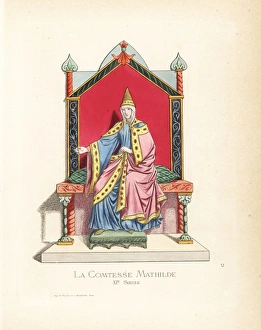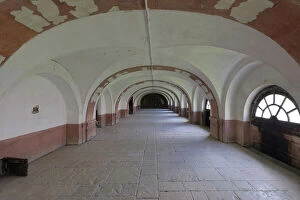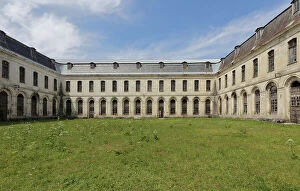1115 Collection
In the year 1115, a remarkable woman named Matilda of Tuscany left her indelible mark on history
All Professionally Made to Order for Quick Shipping
In the year 1115, a remarkable woman named Matilda of Tuscany left her indelible mark on history. Born in 1046, she was not only a noblewoman but also a powerful military leader and patroness of the arts. Her legacy lives on through the centuries. Meanwhile, in Clairvaux Abbey located in Ville-sous-la-Ferte, Aube, France, another story unfolds. This abbey served as both a sanctuary and a place of confinement during this era. Within its walls stood various structures that held contrasting purposes. One such structure was the children's prison where young souls were confined against their will, and is here that innocence met despair and hope struggled to survive. Adjacent to it stood an imposing barn - an emblematic symbol of sustenance and hard work within the abbey grounds. The echoes of laborious days spent tending to crops reverberated through its ancient wooden beams. But amidst these somber spaces lay glimpses of solace and devotion. The chapel offered respite for weary hearts seeking solace in prayer while surrounded by intricate beauty crafted by skilled hands. Venturing deeper into the abbey revealed rows upon rows of prison cells - silent witnesses to countless stories untold. Each stone wall whispered tales of anguish and redemption as inmates sought forgiveness or faced their penance with unwavering resolve. Yet beyond these confining walls lay breathtaking architecture that spoke volumes about human ingenuity and dedication to faith. The Grand Cloister beckoned visitors with its serene ambiance while inviting contemplation amidst tranquility. The cloister itself provided sheltered walkways where monks found moments for reflection amid their daily routines dedicated to spiritual enlightenment. Within this vast complex existed spaces designated for everyday life – like the lay dormitory where individuals shared communal living quarters bound by camaraderie forged through shared experiences within these hallowed halls.



















